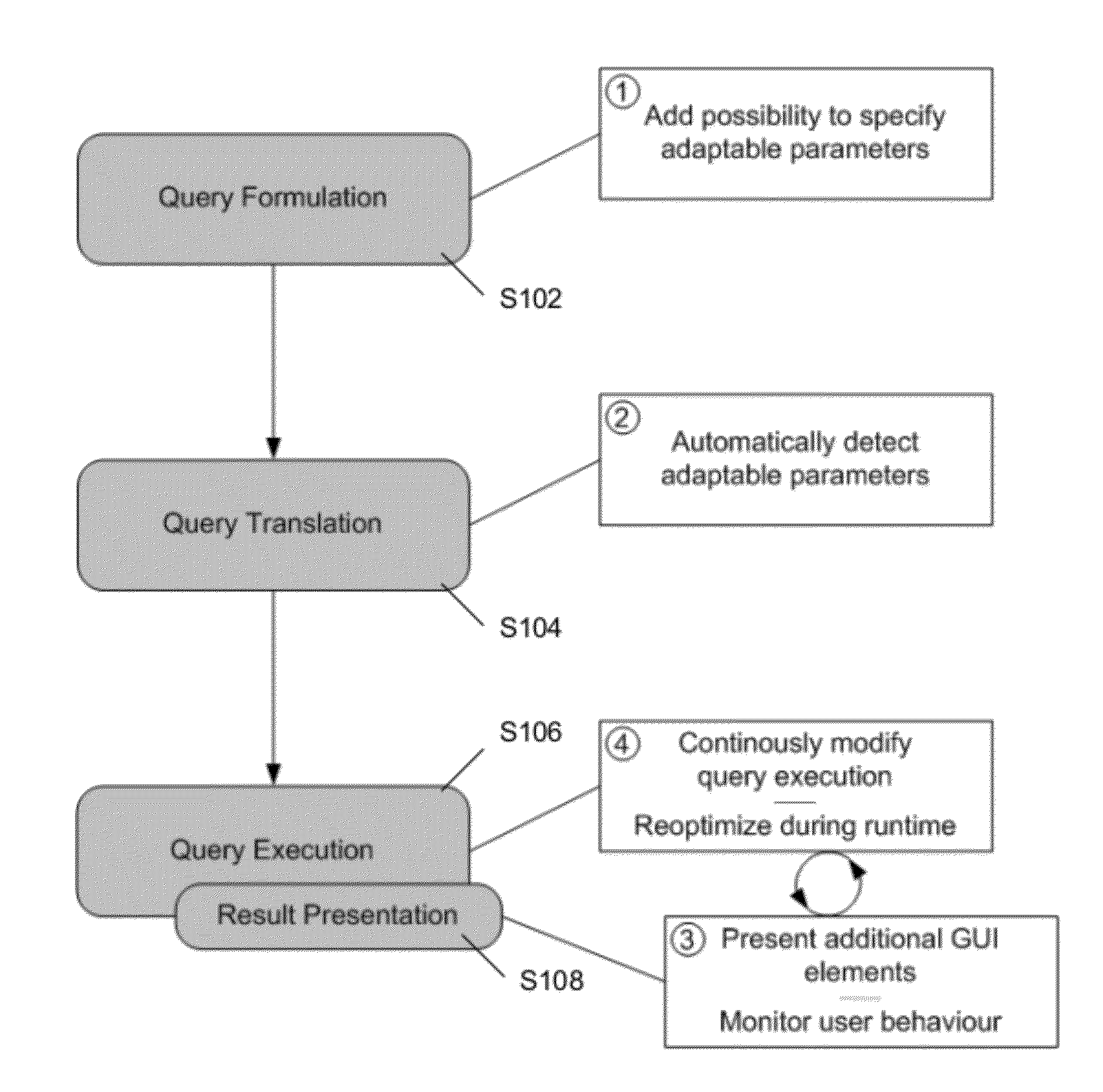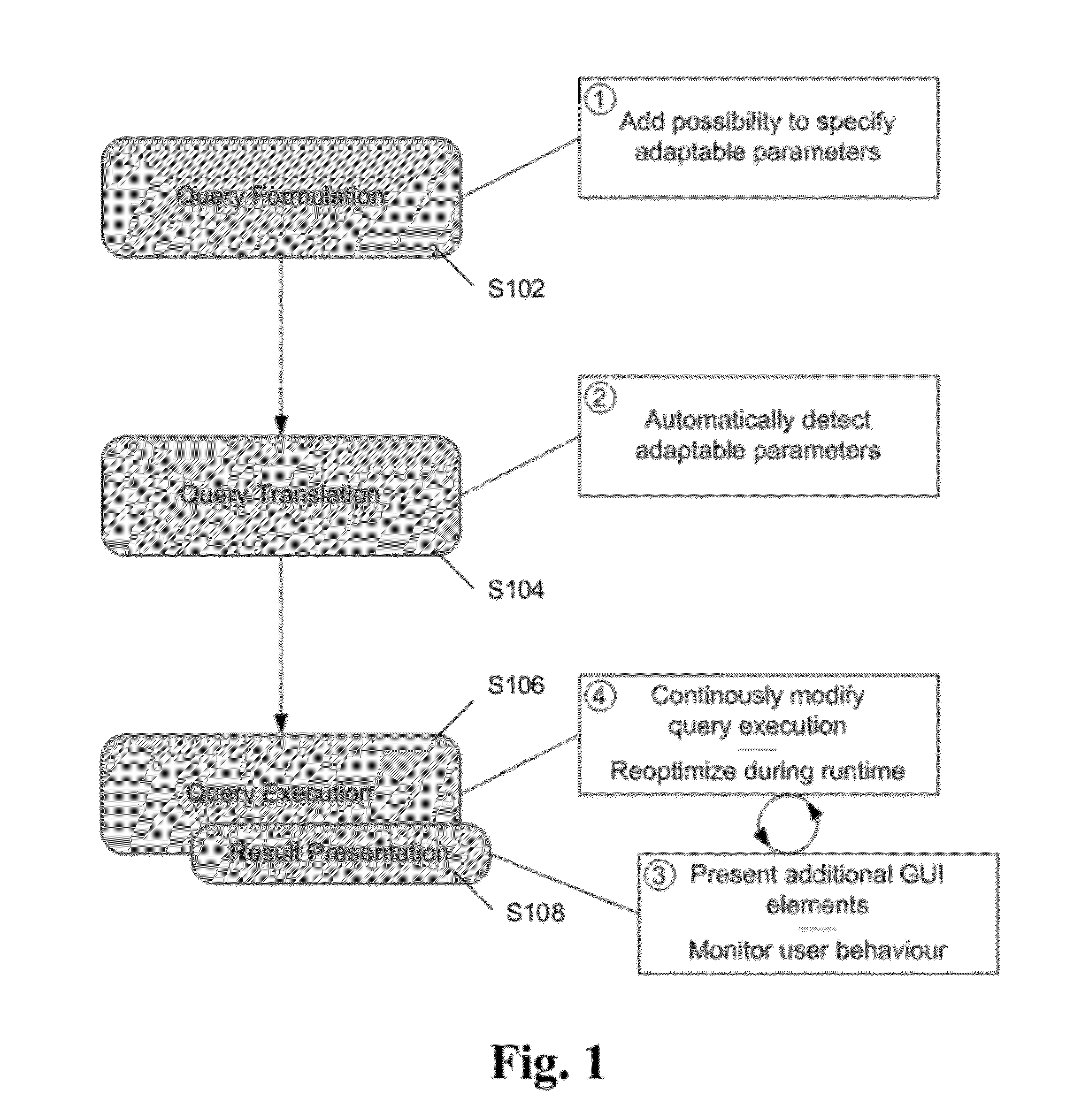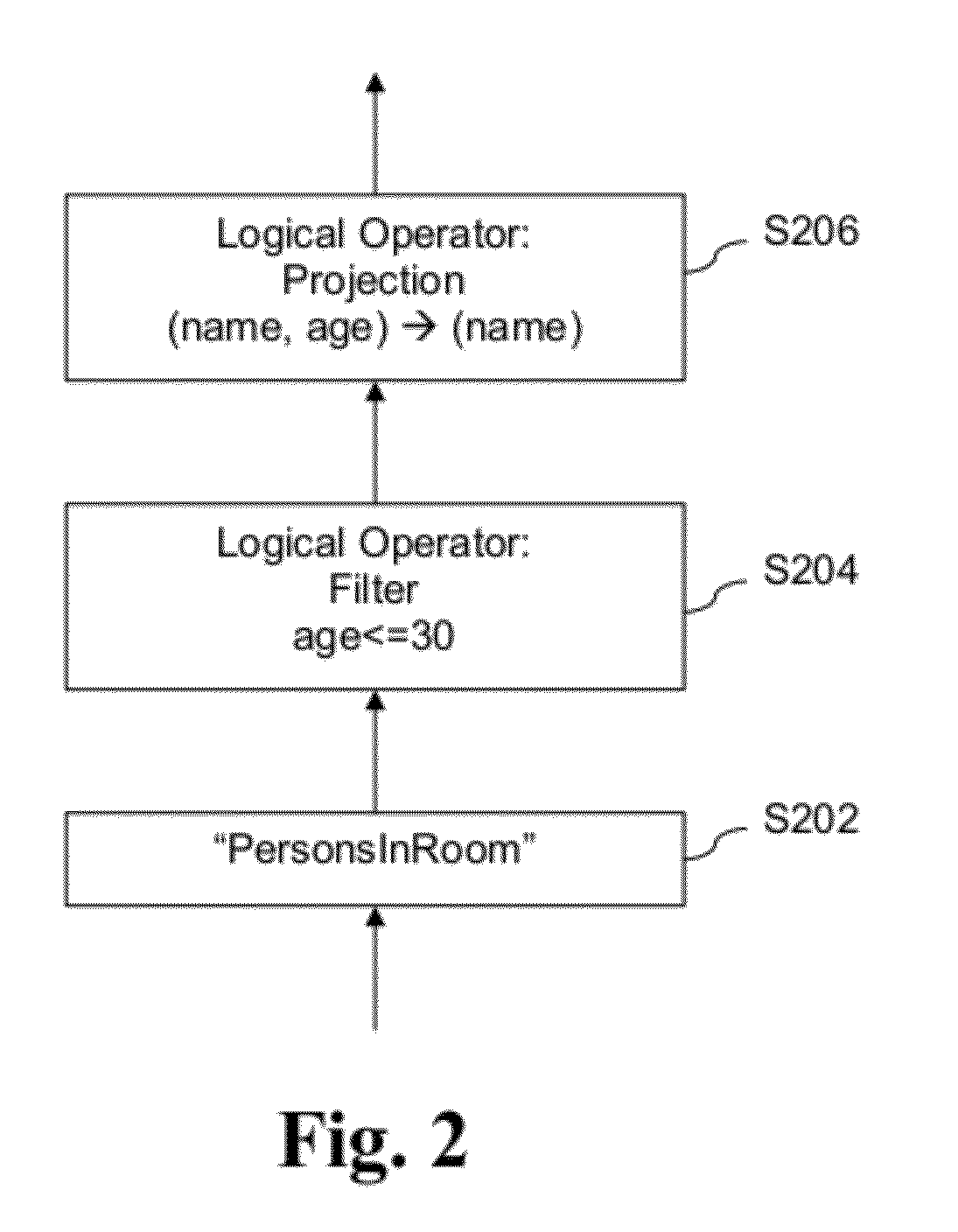Systems and/or methods for user feedback driven dynamic query rewriting in complex event processing environments
a dynamic query and event processing technology, applied in the field of user feedback driven dynamic query rewriting in complex event processing environments, can solve the problems of changing parameters, dbms query modification techniques, and the risk of a cep engine running out of resources while executing a set of queries, so as to improve user experience, manage resource utilization, and save resources
- Summary
- Abstract
- Description
- Claims
- Application Information
AI Technical Summary
Benefits of technology
Problems solved by technology
Method used
Image
Examples
Embodiment Construction
[0032]Certain example embodiments provide the ability to modify continuous complex event processing (CEP) queries during runtime. In certain example embodiments, the results of the queries are presented in a graphical user interface (GUI) manipulable by a user, where such manipulations may (1) provide an indication as to whether and which parameters may be of interest, (2) enable query customization based on such parameters, and / or (3) affect the execution of the queries. In cases where the execution of the queries is affected, modifications may be made in certain example embodiments without having to restart a query and / or without having to run different versions of a query or different queries in parallel.
[0033]Referring now more particularly to the drawings, FIG. 1 is an illustrative overview of a CEP process, including steps from query formulation to query execution and result presentation that has been modified in accordance with certain example embodiments. Basic CEP process s...
PUM
 Login to View More
Login to View More Abstract
Description
Claims
Application Information
 Login to View More
Login to View More - R&D
- Intellectual Property
- Life Sciences
- Materials
- Tech Scout
- Unparalleled Data Quality
- Higher Quality Content
- 60% Fewer Hallucinations
Browse by: Latest US Patents, China's latest patents, Technical Efficacy Thesaurus, Application Domain, Technology Topic, Popular Technical Reports.
© 2025 PatSnap. All rights reserved.Legal|Privacy policy|Modern Slavery Act Transparency Statement|Sitemap|About US| Contact US: help@patsnap.com



